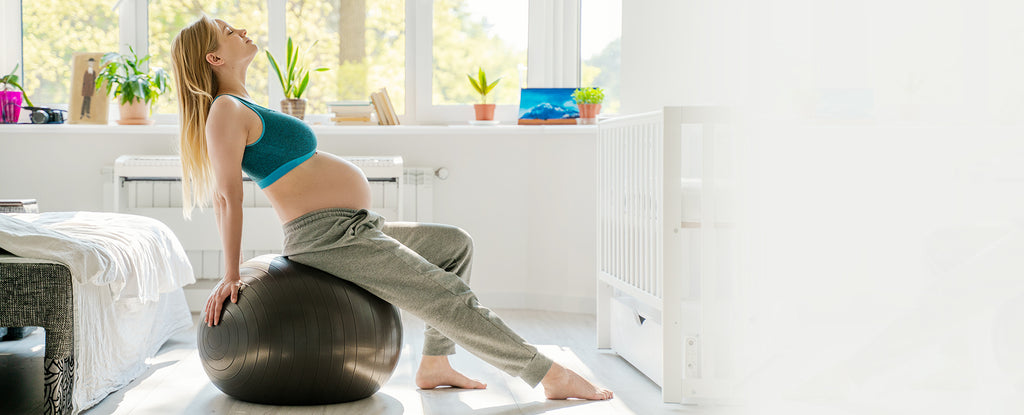Quick Answer: Using a Birth Ball for Labor Preparation
Birth balls are essential tools for labor preparation that offer:
- Enhanced pelvic mobility and optimal baby positioning
- Comfortable labor positions and pain management
- Core muscle strengthening for easier pushing
- Relaxation and breathing support
- Natural, drug-free pain relief during contractions
This guide will show you how to harness the full potential of your birth ball for a more comfortable and empowered childbirth experience.
Introduction: Your Essential Labor Companion
As January unfolds, expectant mothers find themselves amidst the chilly winds and the anticipation of the impending labor. One of the essential tools to aid in this journey is the Trideer birth ball, also known as a birthing or exercise ball. This versatile tool not only provides comfort but also offers various benefits to prepare for childbirth. Here's how you can harness its potential:

5 Key Benefits of Using a Birth Ball
1. Enhancing Pelvic Mobility
Using a birth ball encourages pelvic movement, helping to open up and relax the pelvic muscles. Gentle bouncing or circular movements on the ball can alleviate tension and facilitate the baby's optimal positioning for birth.
How it helps:
- Opens and relaxes pelvic muscles
- Alleviates pelvic tension
- Facilitates optimal baby positioning
- Encourages natural pelvic rocking
- Promotes gravity-assisted descent
2. Labor Positioning
Sitting on the Trideer birth ball can be more comfortable than other positions during early labor. It allows for pelvic rocking, swaying, and leaning forward, promoting gravity-assisted movement and reducing back pain.
Comfortable positions include:
- Sitting upright with gentle bouncing
- Pelvic rocking side to side
- Swaying in circular motions
- Leaning forward for back pain relief
- Kneeling with ball for support
3. Pain Management
The rhythmic movements and positions facilitated by the birth ball can help manage labor pain. Sitting, leaning, or even squatting on the ball can provide relief during contractions.
Pain relief techniques:
- Rhythmic bouncing during contractions
- Leaning forward to relieve back labor
- Squatting positions for pelvic opening
- Gentle swaying for distraction
- Partner-supported positions
4. Strengthening Core Muscles
Regular use of the Trideer birth ball can strengthen your core muscles, promoting better posture and stability during pregnancy and labor. A strong core can aid in pushing during the second stage of labor.
Core benefits:
- Improved posture throughout pregnancy
- Better stability during labor
- Enhanced pushing effectiveness
- Reduced back strain
- Faster postpartum recovery
5. Relaxation and Breathing
Using the Trideer birth ball as a prop for gentle rocking or swaying motions can promote relaxation. Combine this with deep breathing exercises to create a calming rhythm that can help manage anxiety and stress.
Relaxation techniques:
- Gentle rocking with deep breathing
- Swaying motions for stress relief
- Meditation while seated on ball
- Partner massage while on ball
- Visualization exercises

How to Incorporate the Birth Ball into Your Routine
Daily Exercise
Spend at least 10-15 minutes daily on the Trideer birth ball. Begin with gentle bouncing or rocking motions and gradually incorporate more dynamic movements as you become comfortable.
Daily routine suggestions:
- Morning: 5-10 minutes of gentle bouncing to start the day
- Afternoon: Use as a chair while working or watching TV
- Evening: 10-15 minutes of pelvic circles and breathing exercises
- Before bed: Gentle rocking for relaxation
Labor Practice
Practice different labor positions on the ball, such as sitting, leaning forward, or even kneeling. Experiment to find positions that provide the most comfort and pain relief.
Positions to practice:
- Upright sitting: Basic position for pelvic mobility
- Leaning forward: Drape over ball for back pain relief
- Kneeling: Kneel on floor, lean on ball for support
- Squatting: Use ball against wall for supported squats
- Side-lying: Place ball between legs for comfort
Breathing Techniques
While seated on the Trideer birth ball, practice deep breathing exercises. Inhale deeply through the nose, hold for a few seconds, and exhale slowly through the mouth. This can be particularly beneficial during contractions.
Breathing exercises:
- 4-7-8 breathing: Inhale for 4, hold for 7, exhale for 8
- Rhythmic breathing: Match breathing to gentle bouncing
- Visualization breathing: Imagine baby descending with each exhale
- Partner breathing: Synchronize breathing with partner's guidance
Consult a Professional
Consider attending prenatal classes or consulting a doula or midwife who can guide you on specific exercises and positions tailored to your needs.
Professional support options:
- Prenatal yoga or Pilates classes
- Doula consultations for personalized guidance
- Midwife appointments for safety checks
- Childbirth education classes
- Physical therapy for specific concerns

Choosing the Right Birth Ball
Size Matters
Birth ball sizing guide:
- 55cm: For heights under 5'4" (163cm)
- 65cm: For heights 5'4" - 5'10" (163-178cm)
- 75cm: For heights over 5'10" (178cm)
Proper fit test: When sitting on the ball, your knees should be at a 90-degree angle or slightly lower than your hips.
Quality Features to Look For
- Anti-burst technology for safety
- Non-slip surface for stability
- Supports at least 300 lbs (136 kg)
- Includes pump for easy inflation
- Made from phthalate-free materials
Recommended: Trideer Birth Balls
For safe and effective labor preparation, choose Trideer birth balls:
- ✓ Extra-thick anti-burst PVC material - safe for pregnancy and labor
- ✓ Supports up to 2,200 lbs - completely safe for all stages
- ✓ Non-slip textured surface for stability
- ✓ Available in all standard sizes (55cm-75cm)
- ✓ Includes pump for proper inflation
- ✓ Phthalate-free, safe for pregnancy
- ✓ Recommended by doulas and midwives
- ✓ Can be used throughout pregnancy, labor, and postpartum
Safety Tips for Using Birth Balls
- ⚠️ Always have support nearby, especially in late pregnancy
- ⚠️ Use on non-slip surface or mat
- ⚠️ Ensure proper inflation - firm but with slight give
- ⚠️ Start slowly if new to using birth balls
- ⚠️ Stop if you feel dizzy or uncomfortable
- ⚠️ Consult your healthcare provider before starting
- ⚠️ Never use if you have placenta previa or other complications
Frequently Asked Questions
When should I start using a birth ball during pregnancy?
You can start using a birth ball from the second trimester (around 12-14 weeks) onwards. Many women find it helpful throughout pregnancy for comfort and exercise, and especially beneficial in the third trimester for labor preparation.
Can a birth ball help turn a breech baby?
While not guaranteed, certain positions on the birth ball (like leaning forward) can encourage optimal fetal positioning. The pelvic movements and gravity may help baby move into a head-down position. Always consult your healthcare provider for specific exercises.
How long should I sit on a birth ball each day?
Start with 10-15 minutes daily and gradually increase to 30-60 minutes. You can also use it as an alternative to a chair throughout the day. Listen to your body and take breaks as needed.
Can I use a birth ball during active labor?
Yes! Birth balls are excellent during labor for pain management, positioning, and helping baby descend. Many hospitals and birthing centers provide them. Practice positions beforehand so you're comfortable using it during labor.
What's the difference between a birth ball and an exercise ball?
They're the same thing! Birth balls and exercise balls are identical products. The term "birth ball" simply indicates it's being used for pregnancy and labor purposes. Choose one that's anti-burst and properly sized.
How do I know if my birth ball is properly inflated?
When sitting on the ball, your knees should be at a 90-degree angle or slightly lower than your hips. The ball should be firm but have slight give when you press it with your palm. Over-inflation can be uncomfortable and unsafe.
Conclusion: Empowering Your Birth Journey
As January sets the stage for new beginnings, harnessing the benefits of a Trideer birth ball can empower expectant mothers in their labor journey. By incorporating the birth ball into your daily routine and practicing various exercises and positions, you can enhance pelvic mobility, manage pain, and foster relaxation, paving the way for a more comfortable and empowered childbirth experience.
Key takeaways:
- Birth balls offer multiple benefits for labor preparation
- Daily practice (10-15 minutes) builds comfort and confidence
- Various positions help with pain management and baby positioning
- Breathing exercises on the ball promote relaxation
- Professional guidance enhances effectiveness
- Proper size and quality ensure safety
Whether you're preparing for a January birth or any time of year, a birth ball is an invaluable tool that supports you through pregnancy, labor, and beyond. Start incorporating it into your routine today for a more comfortable and empowered birth experience.
Ready to prepare for your birth? Get your Trideer birth ball today and start your journey to a more comfortable labor!


